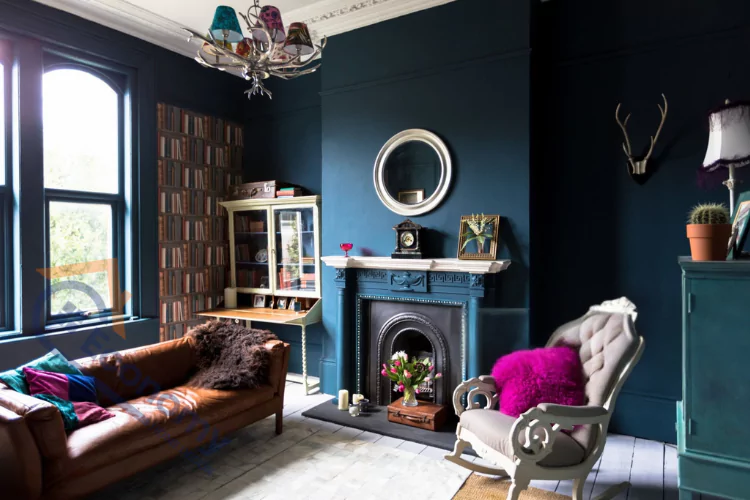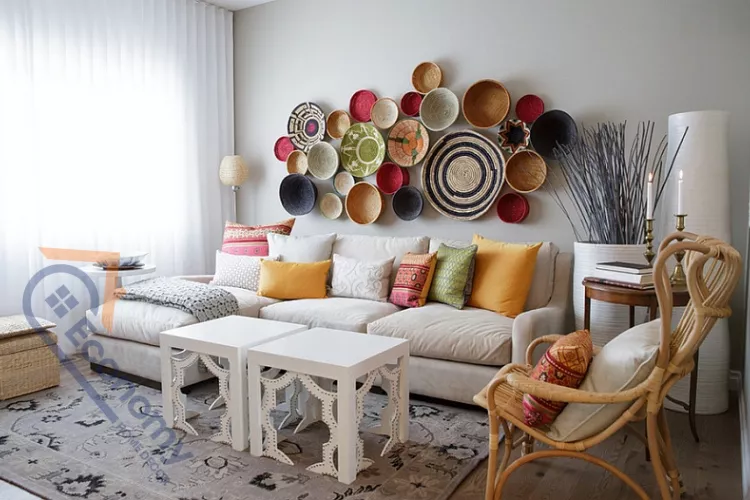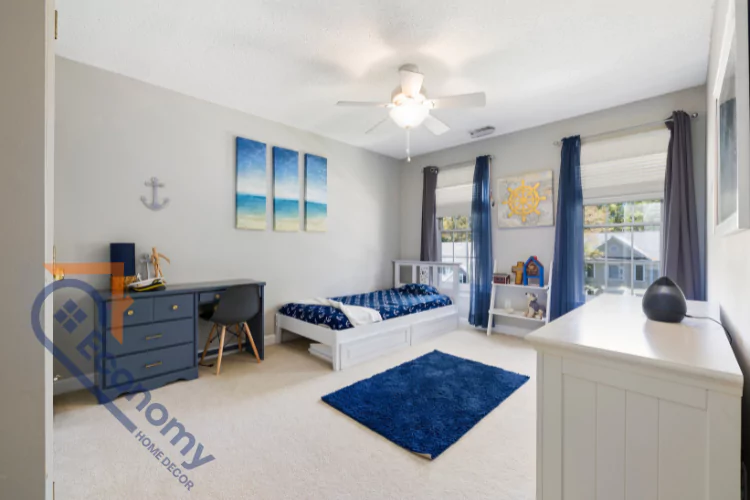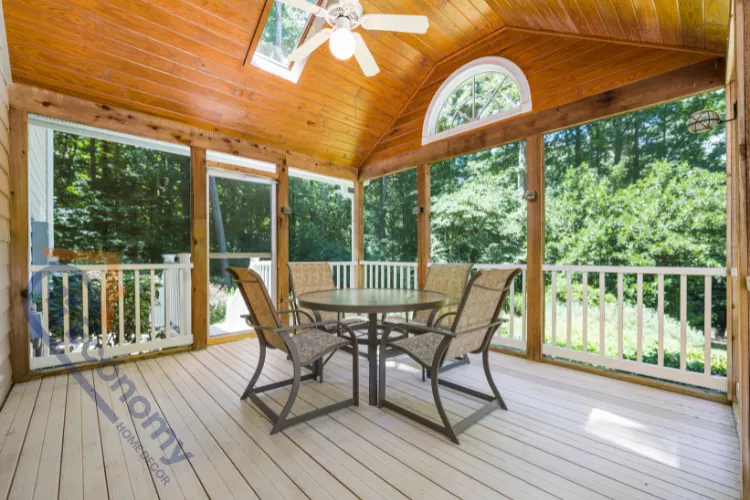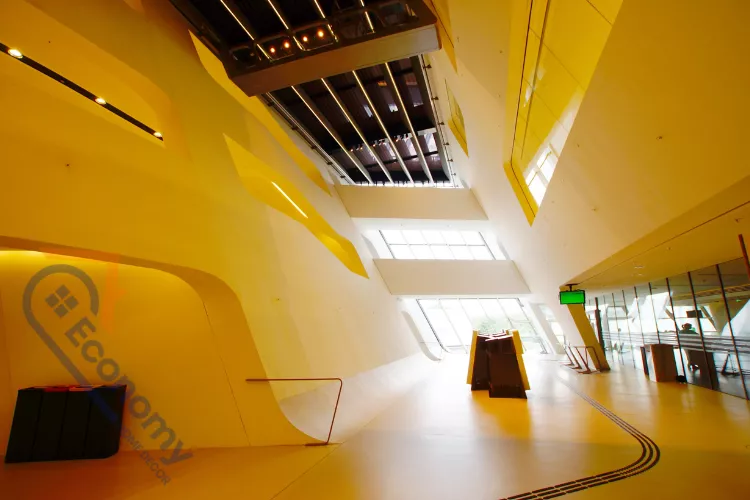Have you been staring at your basement, wondering how to transform that dark, forgotten space into something amazing? You’re definitely not alone! Many homeowners struggle with basement decorating ideas because these underground rooms often come with unique challenges like low ceilings, limited natural light, and that cold, unwelcoming feeling. But here’s the exciting news: your basement has incredible potential to become one of the most functional and stylish areas in your entire home.
Whether you’re working with a finished space or an unfinished concrete jungle, the right decorating approach can completely change how you see and use your basement. From creating a cozy family hangout spot to designing a sophisticated entertainment area, there are countless ways to make this space work harder for you. The key is understanding how to work with your basement’s unique features rather than fighting against them.
Key Takeaways
Before we dive deep into transforming your basement, here are the most important points to remember:
- Lighting is everything: Proper lighting can instantly make low ceilings feel higher and dark spaces feel welcoming
- Color choices matter: Light, neutral colors reflect light and create the illusion of more space
- Multi-functional design works best: Basements should serve multiple purposes to maximize their value
- Work with what you have: Embrace exposed elements like pipes and concrete instead of hiding them
- Think vertical: Use wall space wisely to draw the eye upward and create height
- Comfort is key: Add warmth through textiles, rugs, and proper temperature control
Understanding Your Basement’s Unique Challenges
Before jumping into specific basement decorating ideas, let’s talk about what makes basements different from other rooms in your house. Basements typically have lower ceilings than the rest of your home, sometimes sitting at just seven feet or even less. This can make the space feel cramped and claustrophobic if you’re not careful with your design choices. Natural light is usually limited to small windows near the ceiling, which means you’re dealing with a naturally darker environment that needs thoughtful lighting solutions.
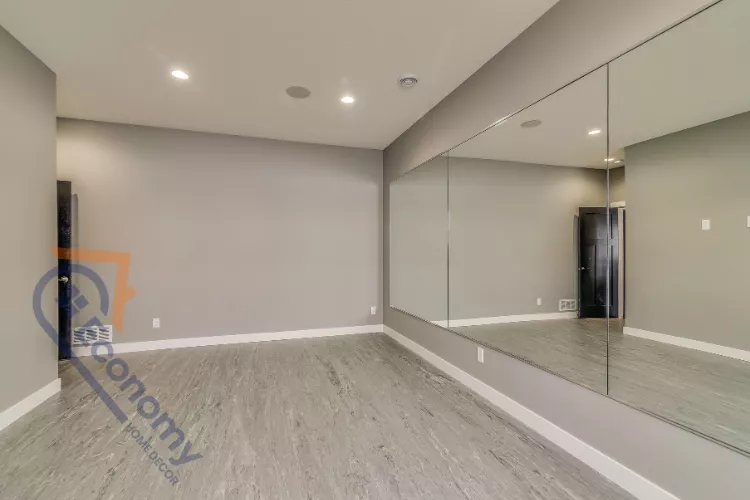
Temperature and moisture control are also major considerations. Basements tend to be cooler and sometimes damper than upstairs rooms, which affects everything from your furniture choices to your flooring decisions. The good news? Once you understand these challenges, you can tackle them head-on with smart decorating strategies that actually enhance your basement’s unique character. Many homeowners discover that these so-called “limitations” actually push them toward more creative, interesting design solutions than they’d find in traditional rooms upstairs.
Mastering Modern Basement Color Ideas Decorating
Color is your secret weapon when it comes to basement transformation. Modern basement color ideas decorating focuses on using lighter shades to combat the naturally darker environment. Think soft whites, warm creams, light grays, and gentle beiges as your foundation colors. These shades reflect whatever light you do have, making the space feel larger and more open than it actually is.
But don’t think you’re stuck with boring neutrals! The trick is using your light base colors on the largest surfaces—walls and ceilings—then adding personality through accent colors in your furniture, artwork, and decorative accessories. Consider a beautiful sage green sofa against white walls, or vibrant throw pillows that pop against a neutral sectional. Navy blue, deep emerald, or rich burgundy can work beautifully as accent colors without overwhelming the space.
Paint your ceiling the same color as your walls, or even slightly lighter. This creates a seamless look that makes it harder to tell where the walls end and the ceiling begins, which tricks the eye into perceiving more height. If you’re feeling adventurous, try a monochromatic color scheme where everything stays within the same color family but varies in tone and texture. This approach creates depth without making the space feel busy or closed in.
Smart Basement Decor Ideas for Maximum Impact
Now let’s talk about the fun stuff—actually decorating your space! Effective basement decor ideas go beyond just choosing pretty things; they’re about creating a cohesive look that makes the space feel intentional and well-designed. Start by defining zones within your basement, especially if it’s a larger space. You might have a TV watching area, a game zone, a bar area, and a workout corner all in one room.
Use area rugs to define these different zones visually. A large rug under your seating area immediately makes it feel like a proper living room rather than just furniture floating in a basement. Choose rugs with some texture and warmth—think soft shags, plush options, or even layered rugs for extra coziness. This also helps with the coldness that often comes with basement concrete floors.
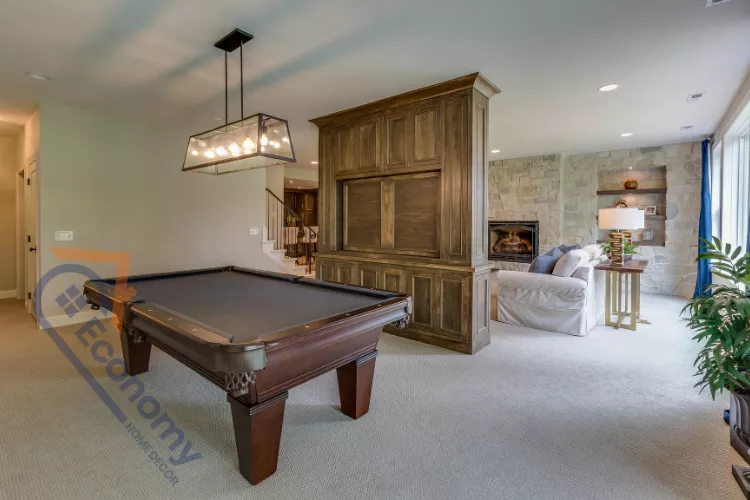
Wall decor makes a massive difference in basements. Large-scale artwork draws the eye and makes walls feel taller. Create a gallery wall that extends vertically rather than horizontally to emphasize height. Mirrors are absolute game-changers in basements—they reflect light around the room and create the illusion of more space. Place a large mirror across from any windows you have, or use multiple mirrors grouped together as an art installation.
Creative Basement Room Decorating Ideas for Different Spaces
| Room Type | Best Color Palette | Essential Elements | Lighting Strategy |
|---|---|---|---|
| Family Room | Warm neutrals with colorful accents | Comfortable seating, entertainment center | Layered lighting with dimmers |
| Home Office | Cool grays and whites | Ergonomic desk, good storage | Bright task lighting |
| Guest Bedroom | Soft, calming colors | Comfortable bed, nightstands | Adjustable bedside lamps |
| Home Gym | Energizing colors, industrial | Rubber flooring, mirrors | Bright overhead lighting |
| Kids’ Playroom | Bright, cheerful colors | Storage solutions, soft surfaces | Even, shadow-free lighting |
Every basement serves a different purpose, so your basement room decorating ideas should match how you’ll actually use the space. If you’re creating a media room, darker colors on the walls can actually work in your favor by reducing glare on screens. Add comfortable, deep seating with plenty of throw blankets and pillows. Consider a sectional sofa that maximizes seating without taking up too much visual space.
For a home office setup, you’ll want to prioritize natural light if you have any, positioning your desk near windows. If that’s not possible, invest in quality task lighting that mimics natural daylight. Keep the color scheme calm and neutral to minimize distractions, and add plants (even artificial ones) to bring life to the space. Good storage is essential—built-in shelving or stylish bookcases keep everything organized without cluttering your workspace.
Creating a guest bedroom in your basement? Focus on making it feel cozy and welcoming despite being underground. Use warm colors, plenty of soft textiles, and make sure you have good blackout options for any windows. A quality mattress is non-negotiable, and adding a small sitting area with a comfortable chair makes the space feel more like a suite than just a bedroom.
Basement Bedroom Decorating Ideas That Feel Cozy
Basement bedroom decorating ideas require special attention because bedrooms need to feel safe, comfortable, and restful—which can be challenging in a space that’s naturally darker and cooler. Start with your bed placement. If you have any natural light, position the bed where morning light might gently wake you. If not, that’s okay—just make sure you’re not placing the bed directly under any exposed pipes or ductwork that might drip condensation.
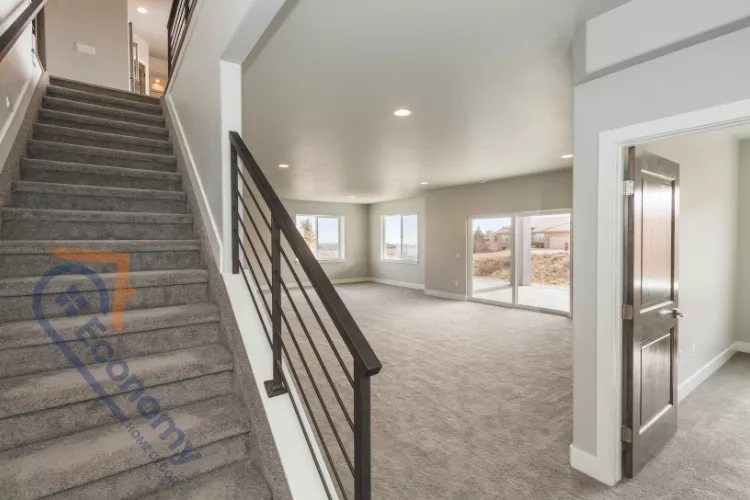
Layer your lighting like crazy in a basement bedroom. You want ambient lighting for general illumination, task lighting for reading, and maybe some accent lighting to create mood. Table lamps on nightstands are essential, but also consider wall sconces to save nightstand space. String lights or LED strips behind a headboard can add a soft, cozy glow that makes the room feel magical rather than cave-like.
Texture is your best friend here. Use multiple layers of bedding—a quality mattress pad, soft sheets, a cozy comforter or duvet, and several decorative pillows and throws. A plush area rug beside the bed feels amazing on bare feet when you wake up. Heavy curtains or drapes add both visual warmth and practical sound dampening, which is helpful if there’s noise from the rest of the house filtering down.
Decorating Basement Ideas for Entertaining Spaces
If your basement is destined to be the entertainment hub of your home, decorating basement ideas should focus on creating an inviting atmosphere where people actually want to hang out. Think about traffic flow first—you want people to move easily through the space without bumping into furniture or feeling cramped. Arrange seating in conversation-friendly groupings rather than all facing one direction.
Consider what entertainment means to your family. Is it watching movies together? Then a quality projector setup or large TV becomes your focal point, with seating arranged accordingly. Is it game nights? Create a dedicated table area with comfortable chairs and good overhead lighting. Maybe it’s all about music and dancing—in that case, you’ll want a sound system and an open floor area.
The basement bar area has become incredibly popular, and for good reason—it’s the perfect spot for a bar since basements naturally stay cooler. Even a small bar cart or a simple counter with bar stools creates a designated drink station that makes entertaining feel more special. Add some open shelving for glassware display, good lighting above the bar area, and maybe a small wine refrigerator if you have the space and budget.
Basement Bar Decorating Ideas for Home Entertainment
Let’s dive deeper into basement bar decorating ideas because this is where you can really have fun with design! Your basement bar can be as simple or elaborate as your space and budget allow. A basic bar setup might be a beautiful console table styled with your favorite spirits, glasses, and some cocktail-making tools. Add a large mirror behind it to reflect light and make the area feel more substantial.
For a more permanent installation, consider building a bar with a countertop at standard bar height (42 inches). Use materials that make a statement—maybe a wood-look laminate for warmth, or go bold with a concrete or marble-look countertop. The front of your bar is prime real estate for personality. You could do shiplap for a rustic farmhouse vibe, tile for a sleek modern look, or even install LED lighting panels that change colors for a fun party atmosphere.

Seating matters too! Bar stools with backs are more comfortable for longer conversations than backless ones. If you have low ceilings, make sure your stools don’t have high backs that make the space feel more cramped. Storage is key for any bar area—you need places for bottles, glassware, tools, and napkins. Floating shelves, a wine rack, and lower cabinets create a functional setup that also looks great. Don’t forget the little touches: a small sink if plumbing allows, an ice bucket, bottle opener, and maybe some fun bar signs or artwork on the wall.
Basement Apartment Decorating Ideas for Rental or In-Law Suites
Basement apartment decorating ideas need to balance style with practicality, especially if you’re renting out the space or housing extended family. The goal is creating a self-contained living area that feels like a complete home rather than just a basement. Start by ensuring the space has everything necessary: sleeping area, bathroom, kitchenette or kitchen, and living space.
For small basement apartments, open floor plans work best. Use furniture placement and area rugs to define different zones rather than walls that would make the space feel chopped up and even smaller. A murphy bed or quality sleeper sofa can make a studio apartment feel more spacious during waking hours. Choose furniture that’s appropriately scaled—oversized pieces will overwhelm the space, but too-small furniture looks like you bought kids’ furniture.
Storage solutions are absolutely critical in basement apartments. Built-in shelving, under-bed storage, and multi-functional furniture pieces (like ottomans with hidden storage or coffee tables with shelves) help keep everything organized. Use vertical space with tall bookcases or wall-mounted shelves. Keep the color scheme light and cohesive throughout the entire apartment to create flow and make it feel larger.
Basement Wall Decor Ideas to Add Personality
Your walls are blank canvases waiting for basement wall decor ideas that express your style! In basements, wall decor serves double duty—it adds personality while also drawing the eye around the room, which makes the space feel more dynamic and less cave-like. Gallery walls work wonderfully in basements. Mix framed photos, artwork, and even three-dimensional objects like decorative plates or small shelves.

Think beyond traditional framed art. Wall-mounted planters with trailing plants add life and movement. Large decorative letters, metal wall sculptures, or even musical instruments displayed as art make interesting focal points. If you have brick or concrete walls, embrace that industrial aesthetic with metal signs, vintage finds, or Edison bulb fixtures mounted directly to the wall.
One often-overlooked basement wall decorating ideas strategy is using temporary wallpaper or wall decals. These are perfect for renters or anyone who wants to test a bold pattern without commitment. An accent wall with geometric wallpaper or a nature-inspired mural can completely transform the feel of your basement. Just make sure any pattern you choose works with your low ceiling height—vertical patterns help, while large horizontal patterns can make ceilings feel even lower.
Small Basement Decorating Ideas That Maximize Space
Working with a small basement? Small basement decorating ideas are all about being strategic with every square foot. Light colors are even more important in small spaces—stick with whites, light grays, and soft pastels for walls and large furniture pieces. Use the same flooring throughout to create continuity and make the space feel larger.
Multi-functional furniture is your best friend. An ottoman that provides storage and extra seating. A console table behind your sofa that serves as a workspace. Nesting tables that tuck away when not needed. Wall-mounted desks or fold-down tables give you work surface without permanently taking up floor space. Choose furniture with exposed legs rather than pieces that sit flush to the floor—this creates visual space underneath that makes the room feel less crowded.
Go vertical with your storage and decor. Tall, narrow bookcases draw the eye upward. Wall-mounted TV units free up floor space that a traditional entertainment center would occupy. Floating shelves provide storage and display space without the visual bulk of traditional furniture. Even your lighting should emphasize height—pendant lights or hanging fixtures pull the eye up toward the ceiling.
Basement Stairs Decorating Ideas for a Grand Entrance
Don’t neglect your stairway! Basement stairs decorating ideas can turn what’s usually a boring or even ugly transition into a design feature. If your stairs are enclosed, consider painting the walls in a bold color or adding wallpaper. A runner on the stairs adds both safety and style—choose a pattern that works with your overall basement aesthetic.
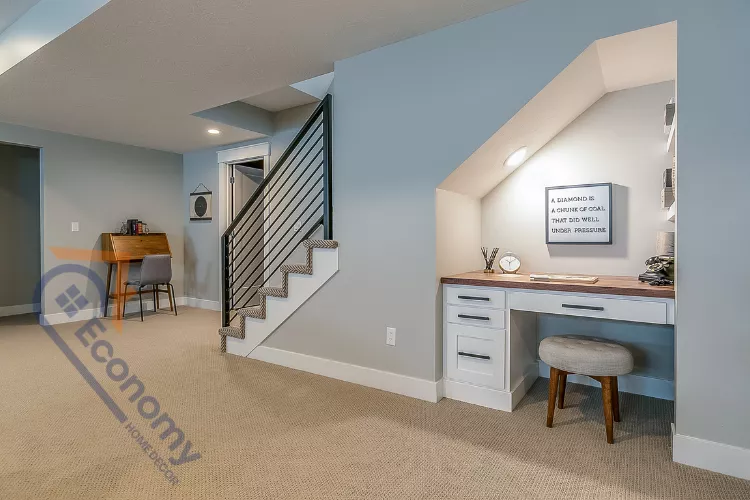
The wall alongside your stairs is perfect for a gallery. Start at the bottom and work your way up, spacing frames so they follow the angle of the staircase. This creates visual interest and makes the journey down to your basement feel intentional. You could do a collection of family photos, vintage artwork, or even a collection of decorative plates arranged on the wall.
Lighting on your stairs isn’t just decorative—it’s a safety issue too. Consider LED strip lighting under each stair tread for a modern look that also helps people see where they’re stepping. Wall sconces spaced along the stairwell add ambient light and visual interest. If you have an open staircase (where you can see underneath), keep that area tidy and consider using it as display space or storage.
Unfinished Basement Decorating Ideas on a Budget
Maybe your basement isn’t finished yet, or perhaps you love the industrial look of exposed elements. Unfinished basement decorating ideas embrace rather than hide these features. Concrete floors can be stained or painted in interesting patterns—even a simple gray epoxy coating makes them look intentional rather than unfinished. Area rugs add warmth and define spaces without requiring full flooring installation.
Exposed ceiling pipes and ductwork can be painted a uniform color (often black or dark gray) to make them look industrial-chic rather than unfinished. String Edison bulb lighting between beams creates atmospheric lighting that works with the raw aesthetic. Industrial-style furniture—metal shelving, wood and pipe shelves, vintage lockers, and metal chairs—complement the unfinished look perfectly.
Storage in unfinished basements is usually easy since you can add hooks, pegboards, and shelving pretty much anywhere. Use this to your advantage! Create a workshop area, craft zone, or storage wall that’s both functional and visually interesting. Plastic storage bins keep things protected from potential moisture, but choose ones in coordinating colors rather than random mismatched containers.
Finished Basement Decorating Ideas for a Polished Look
On the flip side, finished basement decorating ideas let you treat your basement almost like any other room in your house—almost. You still need to be mindful of lighting and color, but you have much more freedom with furniture choices and decorating styles. This is where you can really establish a cohesive design theme, whether that’s modern farmhouse, contemporary minimalist, cozy traditional, or eclectic bohemian.
Built-in features make finished basements feel truly special. Built-in bookshelves around a TV, window seats with storage underneath, or custom closets maximize functionality while looking polished. Crown molding and baseboards add architectural interest that basements often lack. Even simple updates like replacing basic light switches with dimmer switches or adding decorative cover plates elevate the space.
Consider your flooring carefully. Carpet makes basements feel warmer and quieter, but choose moisture-resistant padding underneath. Luxury vinyl plank flooring looks like hardwood but handles the basement environment better. Whatever you choose, make sure it’s appropriate for below-grade installation and won’t be damaged if minor moisture issues occur.
Basement Window Well Decoration Ideas for Curb Appeal
Those small basement windows and their exterior window wells deserve attention too! Basement window well decoration ideas focus on making these often-neglected areas look intentional from both inside and out. Inside, dress your basement windows with treatments that maximize light while providing privacy. Sheer curtains, light-filtering shades, or even no treatment at all if privacy isn’t a concern.
Outside, keep your window wells clean and consider adding decorative elements. Place outdoor-rated plants around the window well (the exterior perimeter, not inside the well itself, which needs to drain). Some homeowners add decorative stones or gravel inside the well for a cleaner look than dirt or concrete. You can even find grates that cover window wells but have attractive designs rather than just plain metal.
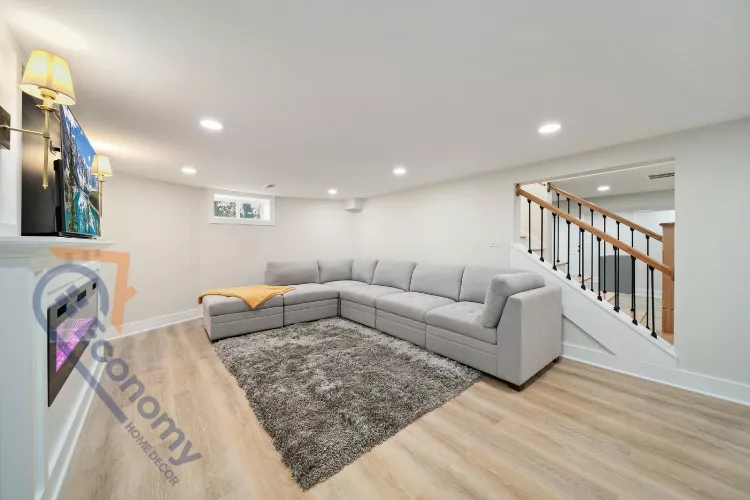
If your window wells are visible from inside, make sure they look good from that angle too. Clean them regularly, remove debris, and consider the view from inside when choosing any decorative elements. Some people add window well covers with clear panels that protect the well from debris while still allowing maximum light—this can significantly brighten your basement.
Basement Christmas Decorating Ideas for Holiday Cheer
Don’t forget your basement during the holidays! Basement Christmas decorating ideas can make your basement feel festive without going overboard. If your basement is a family gathering space, a Christmas tree down there means more time to enjoy it. Choose a tree size appropriate for your ceiling height—a 6-foot tree often works better than a towering 8-footer in basement spaces.
String lights everywhere! They’re perfect for basements because they add both ambiance and actual light, which basements always need more of. Drape them along beams, around windows, or behind furniture for a magical glow. Use battery-operated candles instead of real ones for safety, especially if you have low exposed beams.
Bring holiday decor to every surface—Christmas throw pillows on the couch, a festive table runner on the bar, seasonal artwork on the walls. If you have basement stairs, garland wrapped around the railing with lights makes the descent into your basement feel like entering a winter wonderland. Keep decorations in your established color scheme—if your basement is all neutrals, maybe choose silver and white Christmas decor rather than traditional red and green.
Conclusion
Transforming your basement with creative decorating ideas doesn’t have to be overwhelming or expensive. Whether you’re working with a finished basement ready for styling or an unfinished space where you’re embracing the industrial aesthetic, the key principles remain the same: maximize light with smart color choices and layered lighting, create warmth through textiles and comfortable furniture, and use every square foot intentionally.
Remember that your basement’s unique challenges—those low ceilings, limited windows, and cool temperatures—can actually become assets when you design around them thoughtfully. The cozy, den-like quality of basements makes them perfect for entertainment spaces, bedrooms, home offices, or whatever your family needs most. Don’t be afraid to experiment with different layouts and decorating styles until you find what works best for your space and lifestyle.
Start with one area or one room if your basement feels overwhelming. Maybe tackle those basement stairs first, or focus on creating one perfect zone—like a cozy TV watching area—before moving on to other sections. Every small improvement makes your basement more functional and enjoyable. Before you know it, your basement will transform from that forgotten space into everyone’s favorite room in the house!
Frequently Asked Questions
What colors make a basement look bigger?
Light colors are your best choice for making basements feel more spacious. Stick with whites, light grays, soft beiges, and pale pastels for walls and ceilings. These colors reflect available light and create the illusion of more space. Paint your ceiling the same color as your walls or slightly lighter to blur the boundaries and add perceived height.
How can I decorate my basement on a budget?
Focus on high-impact, low-cost changes like painting walls in light colors, adding affordable lighting (string lights or LED strips), and using area rugs to define spaces. Shop secondhand for furniture, use DIY projects for wall decor, and embrace what you have—painting exposed pipes can look intentionally industrial. Rearranging and decluttering costs nothing but makes a huge difference.
What flooring is best for basements?
Luxury vinyl plank (LVP) flooring is excellent for basements because it looks like wood but handles moisture better. Carpet with moisture-resistant padding works well for warmth and comfort. Stained or painted concrete is budget-friendly for unfinished basements. Avoid solid hardwood, which can warp with moisture. Whatever you choose, ensure it’s rated for below-grade installation.
How do I make my low-ceiling basement feel taller?
Use vertical design elements like tall bookshelves, vertical wall art arrangements, and floor-to-ceiling curtains. Paint walls and ceiling the same light color to blur boundaries. Avoid hanging lights or fans that drop far from the ceiling. Choose low-profile furniture and avoid tall furniture pieces that emphasize the low ceiling.
Do I need a dehumidifier in my finished basement?
Most basements benefit from dehumidifiers because they’re naturally more humid than above-ground spaces. Excess moisture can damage furniture, create musty odors, and promote mold growth. A dehumidifier helps maintain comfortable humidity levels (ideally 30-50%) and protects your decorating investment. It’s especially important if you notice condensation, musty smells, or if you live in a humid climate.
Can I put a bedroom in my basement legally?
Legal requirements for basement bedrooms vary by location, but most areas require egress windows (large enough for emergency exit), proper ceiling height (usually 7 feet minimum), and sometimes separate heating/cooling. Check your local building codes before creating a basement bedroom. These requirements exist for safety, so they’re important to follow even if you’re not planning to rent the space.
How can I add more natural light to my basement?
If structurally possible, adding or enlarging window wells increases natural light significantly. Keep existing windows clean and avoid blocking them with furniture. Use light, sheer window treatments that filter light rather than block it. Mirrors across from windows amplify natural light. Light-colored walls and ceilings reflect whatever natural light you have throughout the space.
What’s the best way to deal with exposed pipes and ductwork?
Embrace them as industrial design elements! Paint all pipes and ductwork a uniform color—black, charcoal gray, or even the same color as your ceiling makes them look intentional. Ensure they’re wrapped properly if they carry cold water (to prevent condensation). Some people add industrial-style lighting or even run string lights along beams between ductwork for a cool aesthetic.


